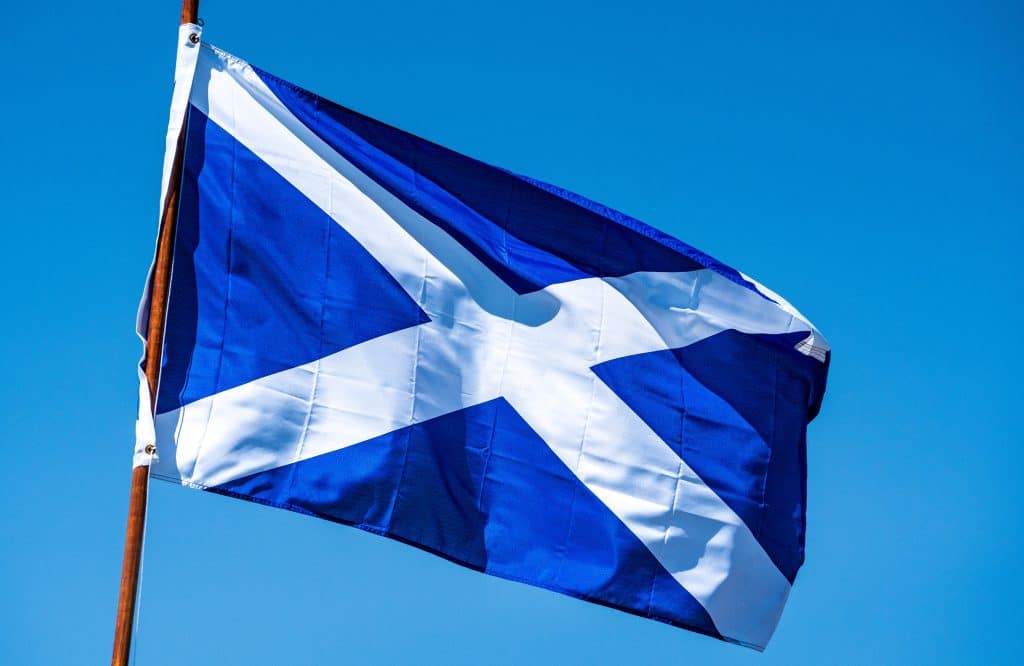If the Scottish Government doesn’t follow the Tories’ abolition of the 45p additional rate, I expect its revenues from Scotland’s own 46p rate will fall by half. Here’s why.
In 2017, the Scottish Government raised the additional rate from 45p to 46p. They called this the “top rate”. On paper, the differences between Scottish and rest of UK (rUK) rates should have raised £378m. A year later, HMRC estimated the actual figure was £239m. The top rate alone would naively have raised £27m – the actual figure was £5m.1This is a corrected version of my earlier post – I posted too quickly and made a sloppy mistake – my apologies, and thanks to those who pointed it out

Why? “Behavioural response”. That could mean a variety of things:
- People actually moving house (their place of residence) to escape the Scottish rates. It doesn’t seem very likely, even at the margins, that high earners would go to that trouble just to save 1%.
- Simple tax evasion as people fail to declare revenue. Again doesn’t seem very likely to me that such small rate differences would make anyone tip into criminality. And, in any event, most high income tax payers are employees, who can’t realistically evade tax.
- People taking the reasonable position that they’re resident in England, not Scotland, when the facts support that, but they wouldn’t have bothered before.2The rules around allocating taxpayers to Scotland or rUK are here Fine!
- People taking marginal positions that they’re (arguably) resident in England, not Scotland. You might call this “avoidance“. But will be hard for HMRC to identify and challenge.
- People lying that they’re resident in England when they’re actually resident in Scotland. Tax evasion – but again hard for HMRC to challenge.
But – whatever the reason – these are a pretty impressive behavioural responses to a small change. Much more than I would have guessed – and it surprised HMRC too (the table above shows they anticipated a 20% response). The response to the top rate is extraordinary – 80% of the income you’d expect, on paper, to arise, simply disappeared.
So we can expect at least a 40% behavioural response to the new gap of 5p between the UK and Scottish rates on high incomes. Possibly 80% or more if the previous history of the top rate is any guide. And we may start seeing a real response (people moving house, rather than just changing where they claim residence). A prudent ballpark estimate would be that Scottish revenues from its 46p top rate will fall by about half; they may disappear entirely (or even become negative).
Of course this doesn’t mean the Scottish Government will simply fall in line with the rest of the UK, and abolish its top rate. They may well take the view that half the revenues are better than none (particularly if it doesn’t expect a real response, i.e. an actual economic cost to Scotland of people moving). And the political signalling of the additional/top rate has always been much more important than the (modest) revenues it collects. £2bn across the whole UK is chicken feed, in the context of about £200bn from income tax as a whole. £5m across Scotland is less than chicken feed.
The moral of the story – the interdependence of the Scottish and rUK economies means that differential tax rates are a Really Bad Idea.3With the usual exception for stuff that can’t move, e.g. land. An independent Scotland would find its tax policy in practice heavily constrained by the tax policy of rUK.
Inevitable caveat: I haven’t covered the effect of the rate changes on the Barnett formula, because I know nothing about it…
Photo thanks to chris robert on Unsplash
-
1This is a corrected version of my earlier post – I posted too quickly and made a sloppy mistake – my apologies, and thanks to those who pointed it out
-
2The rules around allocating taxpayers to Scotland or rUK are here
-
3With the usual exception for stuff that can’t move, e.g. land.


4 responses to “Impact on Scotland of the abolition of the 45p additional income tax rate”
Just an anecdote, but I know a retired higher-rate taxpayer who saw the writing on the wall and decided to move back to a pleasant part of northern England. Tax wasn’t the only reason for the move, but it contributed.
Perhaps I am not reading this correctly, but isn’t £378m the total amount that was expected to be raised by all of the measures implemented in 2017 – splitting the basic rate into 19, 20 and 21% bands, and adding 1p to the 40% and 45% rates, and a change in thresholds. The contribution of the 46% “top rate” rate was just £27m, and in fact raised only £5m more.
Almost all of the additional revenue was expected to be raised by – and it turns out, was raised by – adding 1% to the top end of the basic rate, and bringing down the higher (40/41%) rate threshold by a few thousand pounds.
Now, 5 versus 27 is an even greater behavioral response – over 80%, but it is small numbers. Indeed, I am surprised by quite how small, but Scotland is less than 10% of the UK population, and I suspect a smaller proportion of higher earners than London and the South East.
You are correct – that was really sloppy of me. My apologies. I’ve corrected the post now.
I’m sure we’ve all done something similar. I certainly have!
Do we have an estimate for how much the 46% Scotland rate might be expected to raise over the 40% UK rate? Presumably something south of £200m – that is, 10% of the UK government estimate for the tax impact of abolishing the 45% rate? Is that a big number, in a Scotland-wide context?
Just to return to the numbers, interesting that the 19 and 21% rates performed much as expected, but what explains the 41% and 46% rates and the reduced higher rate threshold, achieving so little compared to the original estimates (less than half, less than a fifth, and about two thirds)?
There is so little post-implementation review of tax changes, so it is good to see some consideration being given to what actually happened in practice.